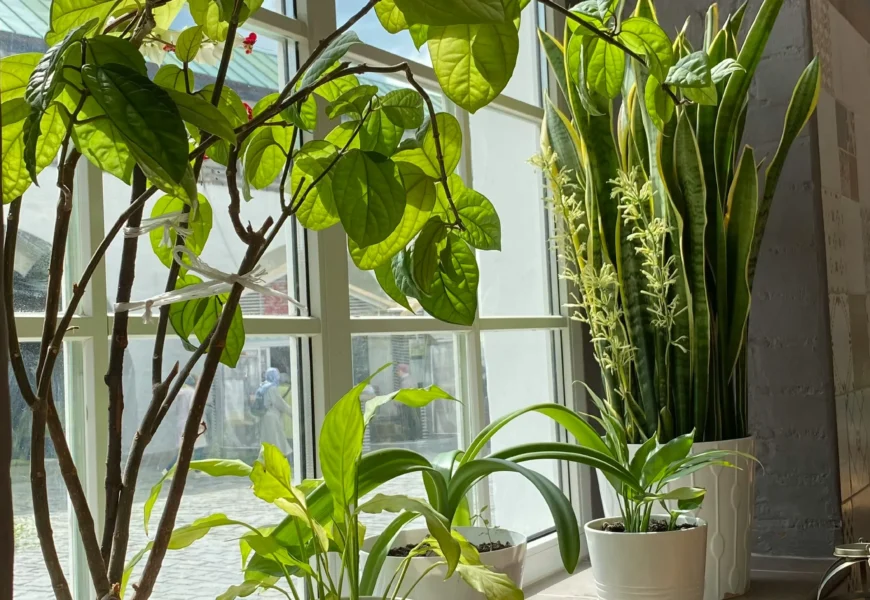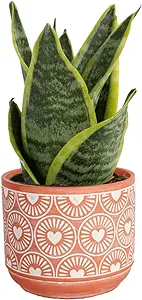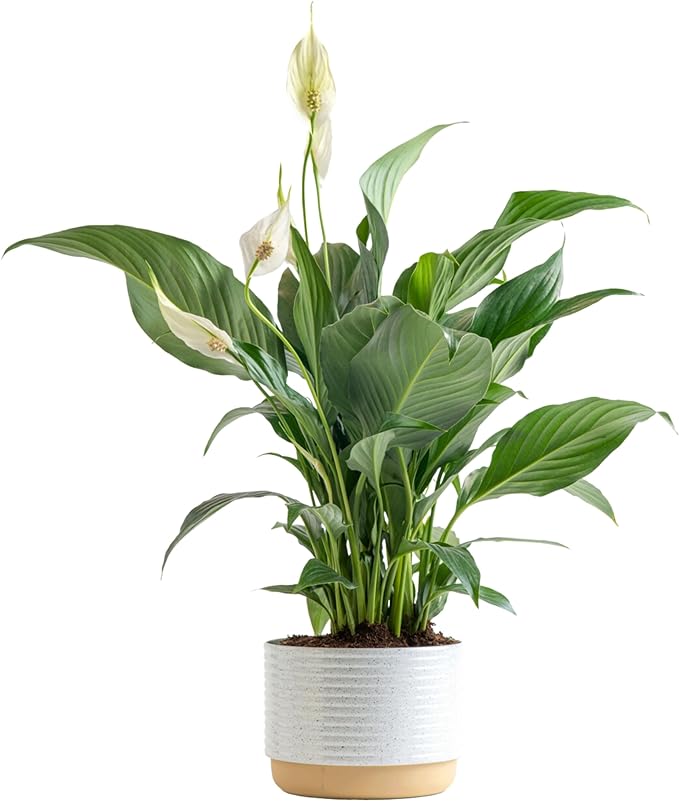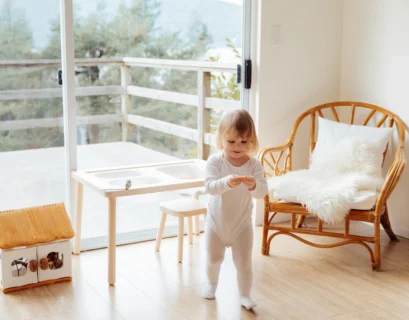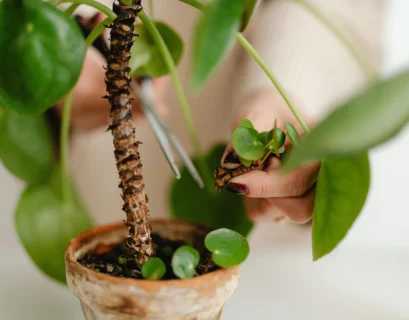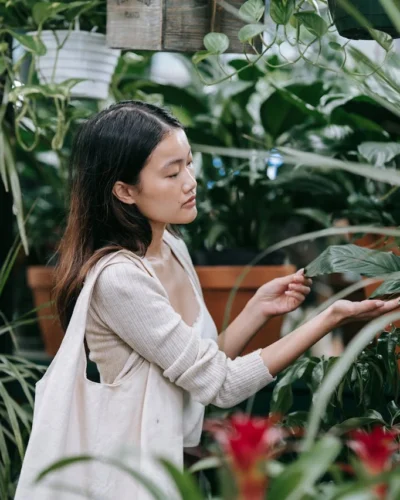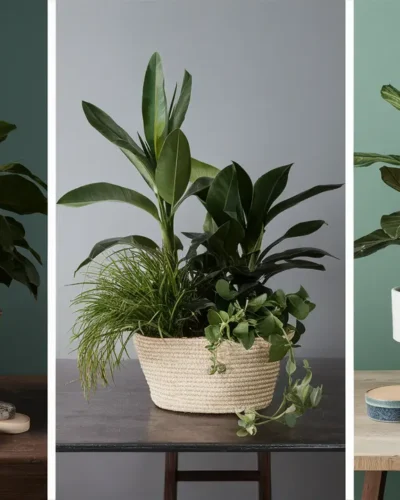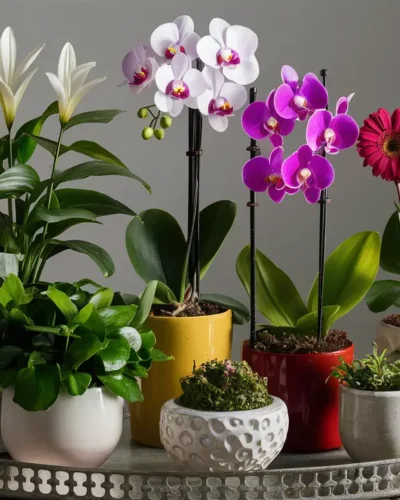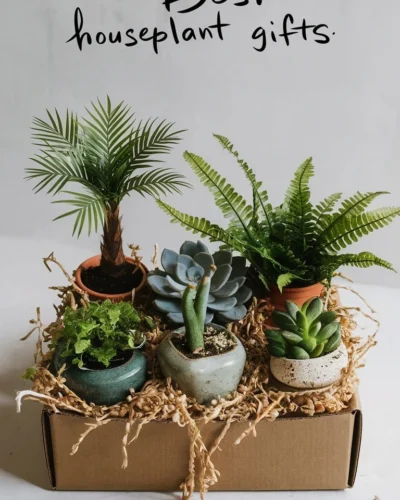Let’s face it, not all of us are blessed with sun-drenched rooms. But that doesn’t mean we can’t have a vibrant indoor jungle! This article will guide you through the enchanting world of low-light loving houseplants. We’ll delve into why some houseplants that hate the sun and thrive in the shade, showcase popular options, and provide expert care tips to ensure your indoor oasis flourishes.
Table of Contents:
The Low-Light Challenge: Why Some Plants Thrive In Shade
You might be surprised to know that many plants aren’t actually “sun-worshippers.” Some species have evolved to thrive in the dappled light of a forest floor or the filtered light of a dense jungle canopy. These shade-tolerant plants have adapted to make the most of minimal sunlight. For instance, they have larger leaves that efficiently capture available light. Their chloroplasts (the chlorophyll-containing structures responsible for photosynthesis) are more efficient at converting even weak light into energy.
Think of it like this: A plant that loves the sun is like a beach bum, soaking up every ray. A low-light plant is more like a nocturnal creature, content in the hushed tranquility of the shadows. And just like a night owl, they have their own unique charm. Their foliage often takes on captivating colors and patterns that make them stand out in a room.
Let’s explore these captivating creatures further. We’ll dive into the world of popular low-light houseplants in the next section!
Houseplants That Hate the Sun: Indoor Only Beauties
Popular Low-Light Loving Houseplants: A Visual Guide
Let’s dive into some captivating low-light houseplants that will brighten your home without demanding a sun-soaked spot.
1. Snake Plant (Sansevieria trifasciata)
Liven up your home with the nearly indestructible Snake Plant!
This beauty is easy to care for, purifies your air, and comes in a decorative pot. Perfect for busy lives or anyone who struggles with plants!
This resilient plant is known for its upright, sword-like leaves. It comes in a variety of patterns, from classic green to vibrant yellow and even variegated with stripes. Snake plants are incredibly low-maintenance, tolerating neglect and infrequent watering. They’re also fantastic air purifiers, making them a great choice for bedrooms and living rooms.
2. ZZ Plant
Another tough cookie! ZZ plants boast glossy, dark green leaves that cluster together, resembling a miniature palm tree. Their hardiness makes them perfect for beginners or those prone to forgetting to water their plants. They’re known for their ability to survive even in extremely low light conditions and can even tolerate brief periods of drought.
3. Cast Iron Plant
As its name suggests, this plant is incredibly tough. Its dark green, leathery leaves sprout from the ground, making it a unique and striking addition to your home. Cast iron plants are notoriously low-maintenance and are happy even in the shadiest corners. They’re a perfect choice for those who want a plant that can handle a bit of neglect.
4. Peace Lily
Bring home a beautiful Peace Lily to add a relaxing, calm feel to any space.
These houseplants are natural air purifiers that help keep your indoor air fresh and clean.
Easily fits tabletop, shelf, living room, office, or bedroom decor
Peace lilies are a popular choice for their elegant, white blooms that resemble peace flags. They thrive in bright, indirect light, though they can also tolerate low-light conditions. These beauties are known for their air-purifying properties and can add a touch of elegance to any room.
5. Pothos
Pothos are a versatile and easy-to-grow vine, commonly found trailing from hanging baskets or climbing up trellises. They come in a variety of colors and patterns, including neon green, golden, and even variegated. This low-maintenance plant can thrive in low light, making it perfect for offices, bedrooms, and even bathrooms.
Are there houseplants that don’t like to be outdoors?
Yes, absolutely! Many houseplants prefer the controlled environment of your home and can even be harmed by direct sunlight or fluctuating temperatures outdoors. The plants mentioned above, like Snake Plants, ZZ Plants, and Cast Iron Plants, are particularly suited to indoor living.
Keep in mind: It’s always best to research the specific needs of your plant before bringing it outdoors. Some houseplants may tolerate a brief stint on your balcony or patio, but a prolonged stay in direct sunlight or extreme weather conditions can damage their delicate leaves or even kill them.
You can learn more about finding the perfect plant for your home, even if you have pets, in our article on Pet-Friendly Indoor Plants. And if you’re curious about innovative ways to add greenery to your space, check out our guide on Vertical Gardening.
Care Tips for Low-Light Plants: Keep Them Thriving Indoors
Now that you’ve discovered the world of low-light loving plants, let’s delve into the essential care tips to keep them thriving indoors.
Water Wisely:
Just like their sunny counterparts, low-light plants need consistent watering, but the frequency will differ. These plants are accustomed to drier conditions, so avoid overwatering, which can lead to root rot. A good rule of thumb is to water when the top inch of soil feels dry to the touch. To ensure even moisture distribution, water deeply until excess water drains out of the drainage holes.
Nutrient Boost:
While these plants are happy with less light, they still require essential nutrients for growth. A diluted liquid fertilizer applied every few weeks during the growing season can provide the necessary boost. However, don’t overdo it, as too much fertilizer can harm the plant’s delicate roots. If you’re unsure, always opt for a weaker solution.
Dusting Dilemma
Dust can accumulate on leaves, blocking light and hindering photosynthesis. Regular dusting helps your plants absorb the available light efficiently. A soft cloth or a damp paper towel can gently remove the dust without damaging the leaves.
Environmental Factors:
While these plants can tolerate low light, they still benefit from good air circulation and adequate humidity. Placing them near a window with indirect light can provide them with the best of both worlds.
Repotting Routine:
As your plants grow, they may need to be repotted into a larger container. Repotting provides fresh soil and more space for root growth. However, low-light plants generally grow at a slower pace, so repotting can be done less frequently than their sun-loving counterparts.
Don’t Give Up:
Keep in mind that even low-light plants need some light to thrive. If you notice your plant struggling, it’s a good idea to move it to a slightly brighter location or consider adding a grow light.
These care tips, coupled with a touch of patience, will help your low-light plants flourish in your indoor haven. Remember, they may not be as vibrant as their sun-loving cousins, but they still offer a unique beauty and charm.
Common Mistakes To Avoid: Ensuring Your Plants Thrive in Low Light
While low-light plants are more forgiving than their sun-loving counterparts, there are still some common mistakes that can hinder their growth. Avoiding these pitfalls will ensure your indoor jungle thrives even in the shade.





1. Overwatering: One of the biggest mistakes with low-light plants is overwatering. These plants don’t need as much moisture as sun-loving plants, so they’re more prone to root rot if watered too frequently. Let the soil dry out completely between waterings, and consider using a finger test to check the moisture level before watering.
2. Lack of Humidity: Low-light plants often prefer a bit more humidity than their sun-loving counterparts. In dry environments, their leaves can start to dry out and become brittle. You can increase the humidity around your plants by grouping them together, using a humidifier, or placing a tray of water near them.
3. Not Enough Nutrients: Low-light plants still need some nutrients to thrive, but they don’t need as much as sun-loving plants. Fertilize your low-light plants monthly during the growing season, and reduce the amount of fertilizer to once every two months during the winter.
4. Neglecting to Clean the Leaves: Just like any plant, low-light plants need clean leaves to absorb sunlight and moisture. Use a damp cloth to wipe down the leaves regularly, removing dust and debris.
5. Not Giving Them a Boost: If your low-light plant is struggling to grow, you can give it a little extra love by providing it with a bit more light. Consider placing it near a window that gets some indirect sunlight, or use a grow light to supplement the light it receives.
By avoiding these common mistakes, you can ensure that your low-light plants thrive in your home, providing you with a beautiful and vibrant indoor jungle. If you’re looking for even more tips on caring for your low-light plants, check out our guide on harnessing the power of self-watering planters.
Beyond the Basics: Adding Depth to Your Indoor Jungle
Now that you’ve got the basics down, let’s explore some exciting ways to make your low-light plant collection even more impressive!
1. The Art of Grouping: Combining different textures, foliage colors, and plant heights can create a truly captivating indoor jungle. Consider placing a towering ZZ plant Find out how amazing and strong ZZ plants are next to a cascading spider plant, or juxtaposing the smooth leaves of a Peace Lily with the feathery fronds of a Boston Fern.
2. Vertical Gardening for Space-Saving Style: If you’re short on floor space, consider exploring vertical gardening options! Innovative solutions for vertical gardening in 2024 provide a stylish and space-saving way to showcase your low-light beauties.
3. The Power of Potting: Choosing the right pot not only enhances your plant’s aesthetic but also plays a crucial role in its health. For instance, a terracotta pot can help regulate moisture, while a glazed pot might retain more moisture, making it a better choice for plants that prefer drier soil.
4. The Unseen Hero: Good Drainage: Remember, even low-light plants need proper drainage to prevent root rot. Ensure your pots have drainage holes and consider adding a layer of gravel or pebbles to the bottom for added drainage.
5. Embrace the “Jungle Vibe”: Incorporate natural elements to enhance your low-light plant haven. Think about using driftwood, moss, or even pebbles to create a more organic and visually appealing environment.
Conclusion
So, are there houseplants that don’t like to be outdoors? Absolutely! The world of low-light plants is brimming with possibilities. By understanding their needs and embracing creative solutions, you can create a thriving indoor jungle that not only beautifies your space but also provides a tranquil oasis for you to enjoy. Don’t be afraid to experiment and let your green thumb flourish in the shade! And if you’re looking for more inspiration, be sure to check out Top 5 Houseplant Trends Taking Over in 2024.

